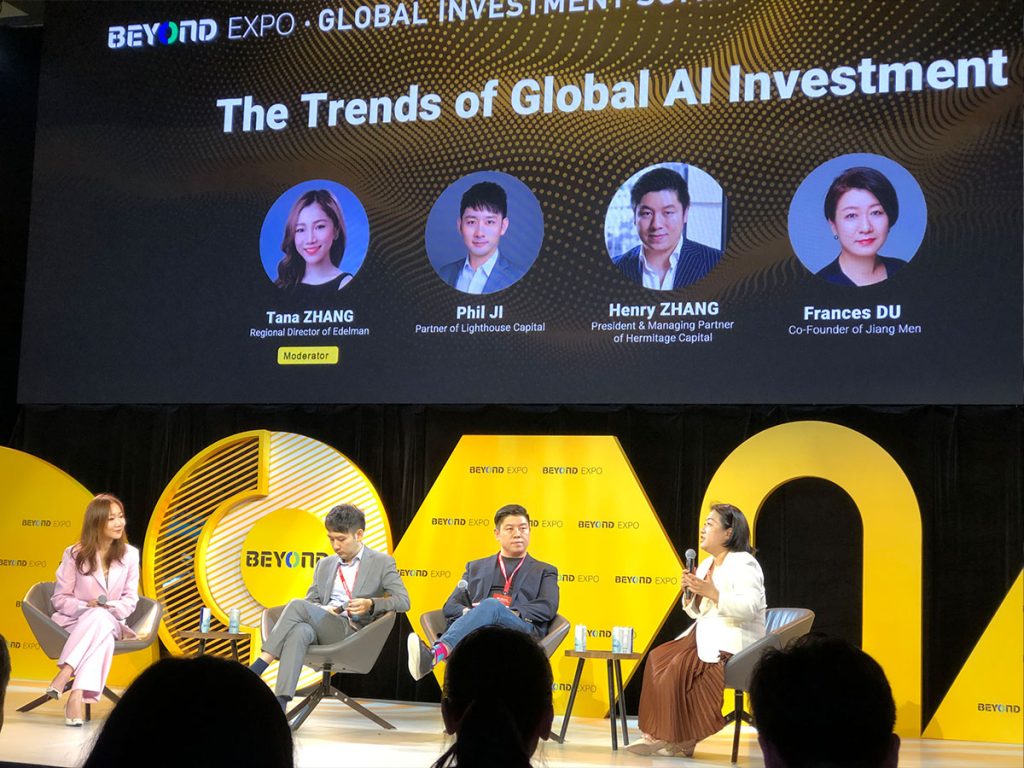The January release of DeepSeek represented China’s ChatGPT moment, noted panellists speaking at last Friday’s roundtable discussion entitled “The Trends of Global AI Investment” at Beyond Expo 2025. Besides lowering equity valuations for leading semiconductor manufacturers, the Chinese startup posed questions about the feasibility of the capital-intensive AI models, allowing more companies to quickly harness AI into their businesses ahead of expectations.
The DeepSeek moment elevated AI from any buzzword stature into a pivotal commercial focus in just a matter of months, said Phil Ji, partner at Lighthouse Capital. He portrayed the Chinese large language model (LLM) as being more than a confidence boost for the industry, but as a window revealing two major developments for stakeholders and investors.
[See more: AI will make us ‘rediscover what it means to be human’, expert promises]
The first was the now-shortened sophistication gap between China and the rest of the world. No longer measured in years, Ji estimates that China’s AI capabilities are now about six months behind global leaders, down from a previous period of one to two years. The second highlighted the maturity of China’s supply chain in supporting the industry’s top players.
The availability of open source LLM has unleashed a wave of entrepreneurism across China, Ji says, enriching the industrial talent pool and spurring competition at a time when policymakers are integrating infrastructure, data, and innovation as part of its long-term strategy for the nation’s domestic AI ambitions.
Going ‘AI Plus’ to stand out in a crowded field

But as China leverages AI to drive its industrial transformation at scale, investors expect entrepreneurs to chart the next wave of innovations amid tougher competition, with incumbent Chinese tech groups reducing prices for LLM models to harness AI across various industries.
AI enterprises are quickly transforming into “AI Plus” platforms, notes panellist Frances Du, co-founder of Jiangmen, a venture capital group. She warns that AI will inevitably be commoditised, placing a greater commercial onus on the “Plus” component when trying to stand out in a crowded field. It has become a pressure recognised by investors as well, where competition is also pushing market valuations higher, which weighs on investment returns.
It is a painful process, shares fellow panellist Henry Zhang, president and managing partner of Hermitage Capital. AI is still in the early stages of its societal impact, having yet to reach its “iPhone moment,” since few can predict what physical hardware AI will need to achieve full market saturation, be it a brain chip, wearable glasses, or smartphones, Zhang says.
[See more: Alibaba’s Joe Tsai closes Beyond Expo 2025]
Currently, AI’s value comes from revenue generated by AI-enabled offerings or from cost savings achieved through greater efficiency and productivity, according to a report by Morgan Stanley, which estimates that China’s AI will deliver a 52 percent return on invested capital by 2030.
Analysts at the investment bank suggest that China is adopting a distinct AI strategy, prioritising market integration over merely enhancing powerful AI capabilities. The report indicates that China aims to influence the AI ecosystem by shaping standards and fostering innovation while ensuring control through aligned responsibilities across the AI value chain.
While innovators and investors are looking for moonshot ideas, both need to understand the commercial impact as well. When asked what advice he would give any AI entrepreneur attending this panel, Lighthouse Capital’s Ji told the audience to be pragmatic with their businesses, and that capital would always be available for transformative ideas.






